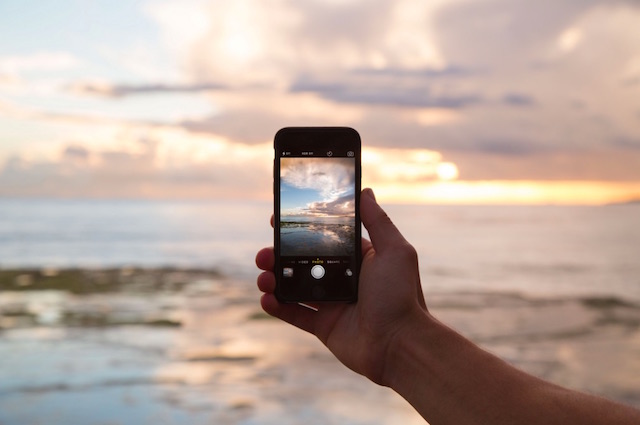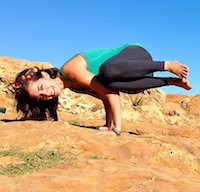I wake up in the morning, fumble for my cell phone, turn off the alarm and open my eyes to stare at a screen.
Before greeting the day, and all while hardly moving a muscle, I check Facebook, Instagram, SnapChat, Twitter, Tumblr, Pinterest and Vine.
Does this sound familiar?
I’m trying to break the habit.
In the age of social media, our need to feel “connected” is incessant, and it’s hindering our ability to develop genuine connection. It’s an age of instant gratification, where almost every need and desire can be satisfied at the click of a button.
But why are we so obsessed?
Maybe we are trying desperately to fill a void—or maybe it is #fomo (fear of missing out) or boredom that drives us.
I’m guilty too. Regardless of the reason, this behavior has become second nature in the Western world. We do it without thinking. We operate on autopilot, and it’s begun to affect our relationships with others and with ourselves.
In the 1980s, University of Oxford anthropologist and psychologist Robin Dunbar studied primates to find out why they dedicate so much time and energy to grooming. Through his studies, he developed a theory, now called the Social Brain Hypothesis. Dunbar discovered that in primates (humans included) there is a direct correlation between brain size and social group size.
To summarize the results of the study in layman’s terms, Dunbar found that the average person can only accommodate up to one hundred and fifty people in his or her social circle. Go beyond that number and the quality of each relationship deteriorates.
With social media friend lists running well into the hundreds, and even thousands, we think we can easily keep track of the goings-on and interests in the lives of many more than one hundred and fifty friends and acquaintances. But we discount the things we’re losing out on—shared experiences, deep interpersonal connections and introspection.
Where does it end?
I have practiced in yoga classes where students keep their phones next to their mat. Exceptions to the “no phone in class” rule do exist. There are emergency situations, of course. But at what point do we completely lose our ability to just be—to disconnect from the world and actually connect to ourselves?
The things we desperately seek can’t be found with the swipe of a fingertip on a screen. They come from within.
This is easier said than done, right?
You bet! In a fast-paced, multitasking world, our brains take in and process tons of stimuli simultaneously. So how do we slow the constant chatter? How do we stop the noise, take ourselves off of autopilot and arrive back to the present moment? In The Yoga Sutras of Pantanjali , Sutra 1.2 says:
Yoga is the stilling of the fluctuations of the mind stuff.
Yoga is not the complete stilling of the mind. Even thousands of years ago, the author of the sutras realized that for an average person, Samadhi—the ultimate state of bliss and freedom from thought—is unrealistic. But there is hope! Through practice and patience, we can still some of the fluctuations, dim some of the chatter. I’ll take some over none any day.
Through my own yoga and meditation practice and experience, I have grown to appreciate that the tiniest adjustments add up to the greatest change. When we learn to become present, no longer thinking about the future or ruminating in the past, we begin to cultivate mindfulness. Eventually, there is a little more space between our thoughts, a little more stillness in our lives. It takes work and discipline, but nothing worth having comes easily. Learning to just be, without constant stimulation, allows us to be more present for ourselves and those around us. It offers us the gift of genuinely experiencing our lives—no hashtag, filter or retweet necessary.
So what can we do to bring some mindfulness into our lives? Try these three simple exercises to slow down and bring yourself back to the here and now:
1. Mindful Walking.
Try this anytime, anywhere—even better if you’re barefoot! Pay attention to the sensation as you walk. Notice your heel touching the ground, then the ball of the foot. Do you tend to put more weight on the insides or outsides of your feet? Do you engage all your toes? What does the ground feel like beneath your foot—hot, cold, rough, smooth, dry, wet? Notice the sensation without judging the experience.
2. Breath Awareness.
This exercise helps calm anxiety and can be done anywhere. Notice your breath, breathing in and out through the nose. What happens in the body as you inhale and exhale? What parts of the body move, and what parts are stiff? Is the air you inhale hot or cold? Feel the breath moving in and out of your nostrils. Pick up on the subtleties of the sensation.
3. Mindful Eating.
Bring awareness to the food you are eating, or the liquid you’re drinking. What does it taste like in your mouth? Feel the temperature, texture and weight. Does it change? Challenge yourself to eat without looking at your phone, TV or computer. Can you eat in complete silence? How does that change the experience?
Each, or all, of these mindfulness techniques (done without our phone or device anywhere around) will go a long way in connecting us back to ourselves, and thus connecting us in deeper ways to life.
~
Author: Stephanie Greco
Apprentice Editor: Gayle Fleming / Editor: Toby Israel
Image: Jordan McQueen/Unsplash
~







Read 6 comments and reply